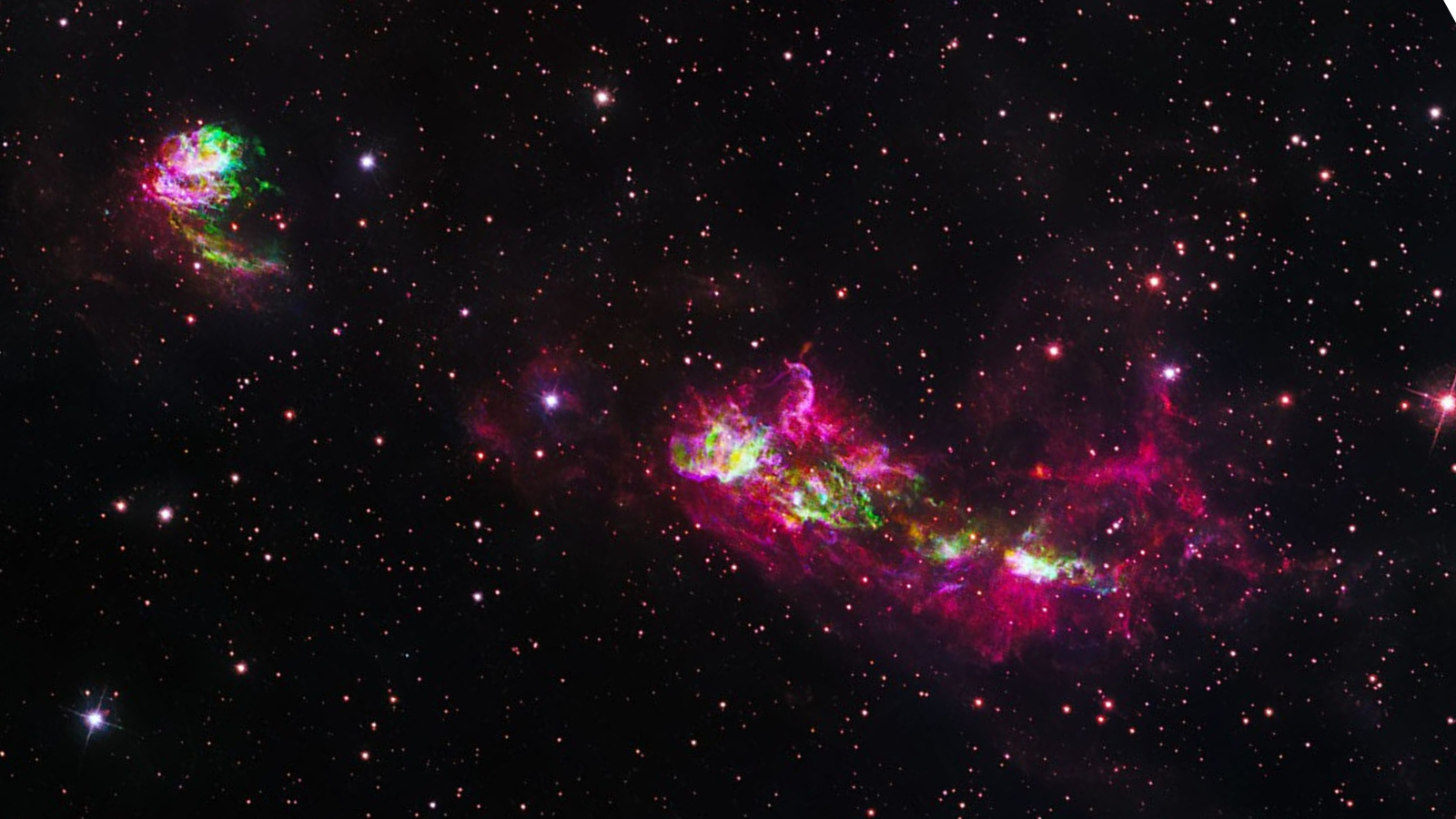Oh, My! When Worlds Really Collide
Around a distant star, two planets similar to Earth collided and were destroyed, astronomers said today.
The somewhat speculative scenario is based on the leftovers: a ring of debris around the star that includes a million times more dust than now circles our sun.
"It's as if Earth and Venus collided," said researcher Benjamin Zuckerman, UCLA professor of physics and astronomy. "Astronomers have never seen anything like this before. Apparently, major catastrophic collisions can take place in a fully mature planetary system."
The researchers used X-ray data and other observations of a star called BD+20 307. They had assumed it was a young star, just a few hundred million years old, and the debris was leftovers from planet formation. But earlier this year, another study showed the star was actually a binary pair, and that the stars were billions of years old.
So why all the debris? The dust is about the same distance from the stellar pair as Earth is from the sun, and given current theories of planet formation, that debris should have been swept up into planets by now or pushed away by stellar radiation. It simply shouldn't be there.
A colossal collision must have created all that dust sometime in the past few hundred thousand years and perhaps much more recently, the astronomers figure.
It would have been a whopper.
Breaking space news, the latest updates on rocket launches, skywatching events and more!
"If any life was present on either planet, the massive collision would have wiped out everything in a matter of minutes — the ultimate extinction event," said Gregory Henry, an astronomer at Tennessee State University (TSU) who worked with Zuckerman on the research. "A massive disk of infrared-emitting dust circling the star provides silent testimony to this sad fate."
To put the collision into context, Zuckerman said: "By contrast with the massive crash in the BD+20 307 system, the collision of an asteroid with Earth 65 million years ago, the most favored explanation for the final demise of the dinosaurs, was a mere pipsqueak."
The work was funded by the National Science Foundation and NASA, and also by TSU and the State of Tennessee. It will be detailed in the December issue of the Astrophysical Journal.
The conclusion has the astronomers thinking about home.
"This poses two very interesting questions," said TSU astronomer Francis Fekel. "How do planetary orbits become destabilized in such an old, mature system, and could such a collision happen in our own solar system?"
It has already happened here, in fact. Our moon is thought to have been created when a Mars-sized object slammed into Earth. Henry points out that computer models done by other researchers suggest that as planets in our solar system migrate over time, there is a "small probability for collisions of Mercury with Earth or Venus sometime in the next billion years or more."
Of course by then the sun will have expanded and we might be toast anyway.
- Top 10 Ways to Destroy Earth
- Top 10 Strangest Things in Space
- Recipe to Save Earth: Move It

Rob has been producing internet content since the mid-1990s. He was a writer, editor and Director of Site Operations at Space.com starting in 1999. He served as Managing Editor of LiveScience since its launch in 2004. He then oversaw news operations for the Space.com's then-parent company TechMediaNetwork's growing suite of technology, science and business news sites. Prior to joining the company, Rob was an editor at The Star-Ledger in New Jersey. He has a journalism degree from Humboldt State University in California, is an author and also writes for Medium.
